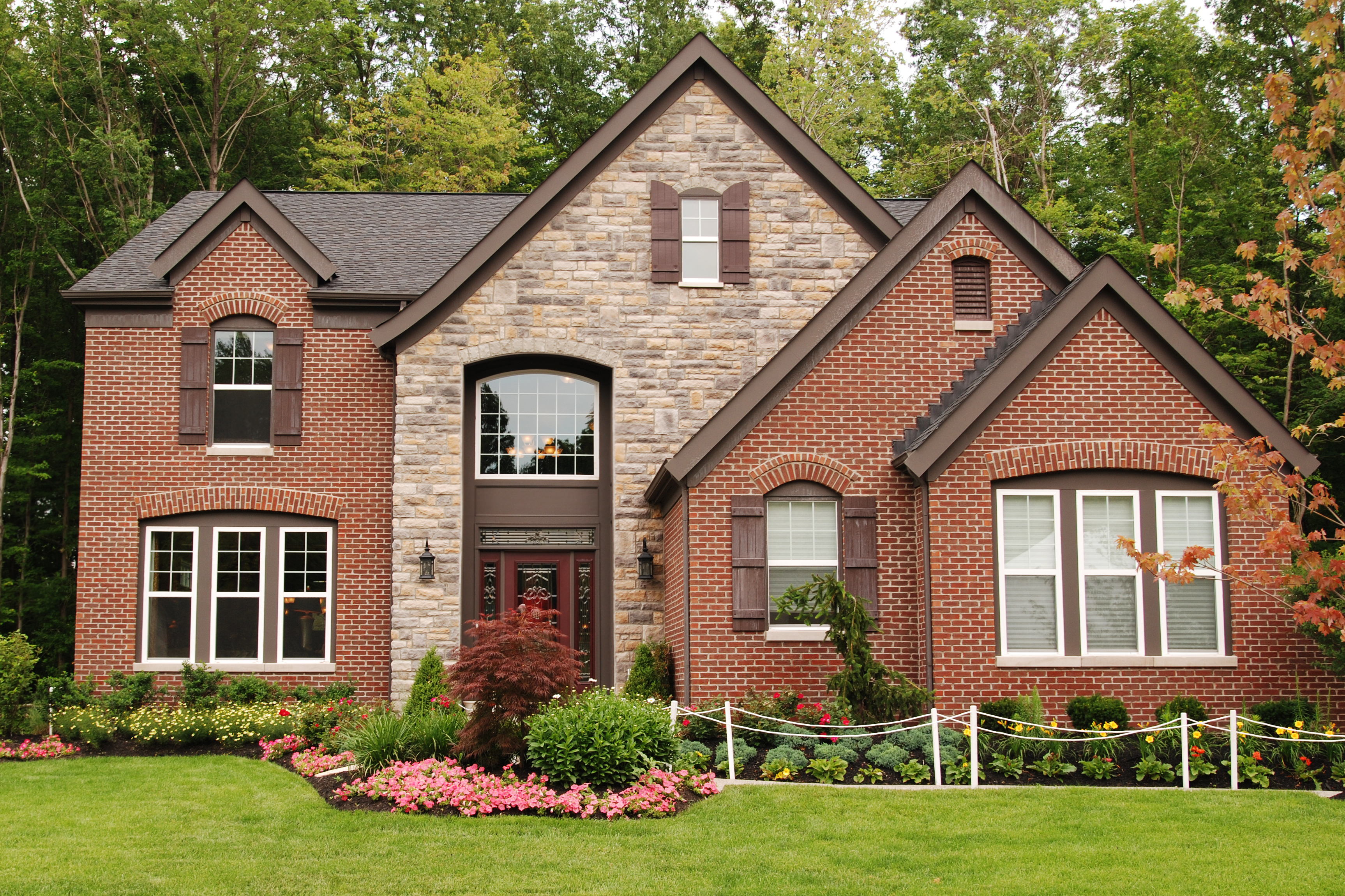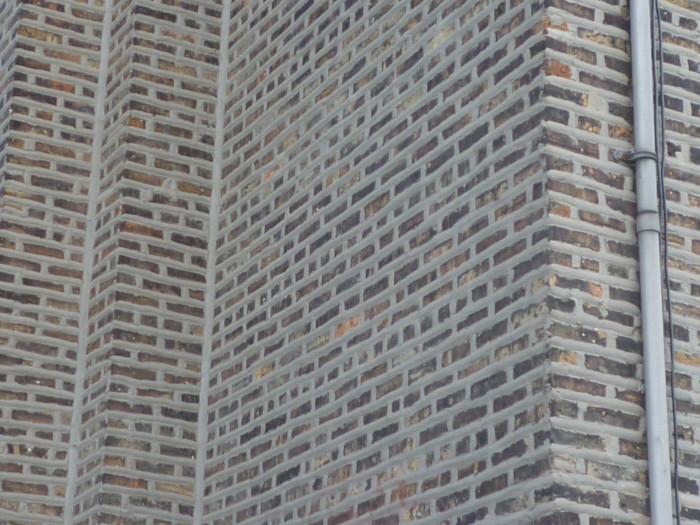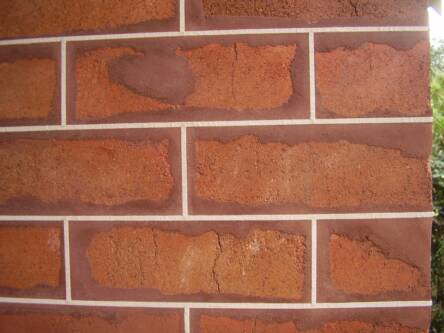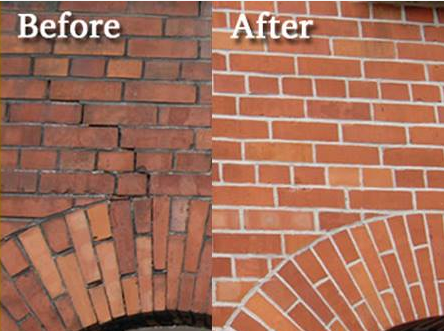
Tuckpointing is a service we offer as part of exterior remodeling. Our Chicago tuckpointing contractors are the best in the business, so we wanted to share their secrets of their process with you so that you can understand what tuckpointing is, how it works, and how we are able to offer professional work with the best results.

What is Tuckpointing?
By definition, tuckpointing is a type of masonry that uses two contrasting colors of mortar in the mortar joints of brickwork. One of the colors will match the bricks themselves, and the other will contrast it, giving the impression of very fine joints between the bricks. This method was developed in England in the eighteenth century, as a way to imitate the look of “rubbed bricks,” which were oversized reddish-colored bricks that were often cut by hand to a precise size after firing. When laid with white lime mortar, a very nice and neat finish of red brick with fine contrasting white lines was achieved. Tuckpointing can mimic this look using cheaper, unrubbed bricks instead by laying them in a mortar that matches the brick, and then adding a fine line of contrasting color into the joints (see photo below).

Why Should You Tuckpoint?
Tuckpointing eventually becomes mandatory when mortar joints have cracked, flaked, or disintegrated due to the harsh effects of weather and wear over time. When mortar becomes weak, moisture breaks down the stone or brick masonry wall and can potentially cause moisture problems behind it. When tuckpointing is done properly, it provides a relatively waterproof mortar joint that extends the life of the wall.
Tuckpointing in Chicago
In a city like Chicago, tuckpointing is a very common practice, as most of the buildings in the city are constructed of brick. The severe weather that occurs in Chicago, from wind-driven rain, ice and snow in the winter to intense humidity in the summer, can cause the mortar between brick joints to break down easily. Chicago tuckpointing contractors like us have become experts in the trade because of our many years of experience working with different types of brick and mortar. This article explains the process by which our tuckpointing experts follow to not only get the job done, but do it in a way that produces the best results for our Chicago customers.
The Tuckpointing Process
- Grind out joints – using a grinder, get rid of the old mortar in the joint between the bricks
- Brush or hose off debris – brush off any debris left over after grinding, hose off if needed
- Mix the mortar – add water to the mortar to desired thickness, add coloring if needed to match brick color
- Apply same-colored mortar to brick joints and let dry – using special tuckpointing tools, apply the same-colored mortar to the brick joints and scrape clean, then allow it to dry
- Apply and cut the contrasting mortar to brick joints on top of previously applied mortar and let dry – add the contrasting colored mortar in very thin fillets on top of the previously applied mortar and cut it to create very clean lines.
Tuckpointing Tools
Angle Grinder
An angle grinder is used to cut out (also known in the industry as “grind out”) the old mortar in the brick joints. These are essential tools in the tuckpointing trade and are necessary to achieve the best tuckpointing results. These grinders are typically equipped with diamond blades and can be fitted with other accessories, like special guards, dust shrouds and water hoses for cooling the blade and minimizing dust.
Masonry Brush
Masonry brushes are made from synthetic horse hair or other materials. They are used to clean out the debris after grinding out the joints, as well as to create specific finishes. They are available in varying shapes and sizes for different applications.
Hawk Board
Hawk boards, or mortar boards, are tools used for holding mortar as it is applied to the wall. They are typically constructed of a thin sheet of Aluminum or Magnesium, with a handle connected to the bottom for easy handling. This board is handy because it allows for easy access of the mortar instead of having to constantly dig it out of a bucket.
Trowel
Trowels are available in many shapes and sizes, with the most common being the Margin Trowel (5″ x 2″). More often referred to as a bucket trowel, our tuckpointing contractor uses this tool to scoop the mixed mortar on to the hawk board for pointing. Other trowels used in the trade include different sizes of margin trowels, brick trowels, and concrete trowels.
Mortar Used for Tuckpointing
To make the types of mortars needed for tuckpointing, all you need is three ingredients – sand, Portland cement, and Mason’s lime. The sand serves as the ingredient that gives the other ingredients something to bind to, or an aggregate. The sand also works as filler, because you can increase or decrease the amount of sand in the mix can either strengthen or weaken it. Portland cement is made of crushed limestone, and acts as the binder, a.k.a. the thing that holds it all together. This is a hydraulic, or water-resistant cement, which is necessary when tuckpointing. Finally, Mason’s lime is lime that has been water-treated, and provides control over the setting time or the mortar by slowing the hardening effect. This makes the mortar pliable and sticky, which improves the way it bonds to other materials.
These three ingredients plus water can make all types of mortar that works well when tuckpointing. To change the color of the mortar to match the bricks, there are color additives and additional ingredients that can be added.
Results to Expect
When done correctly, you should expect tuckpointing to last between 10 and 20 years. The brickwork should look fresh and new, as if the building has just been constructed (regardless of how old the building actually is). The photo below is an example of brickwork before and after tuckpointing to show what the results should be.

Call us today to book your complimentary Chicago tuckpointing consultation!
